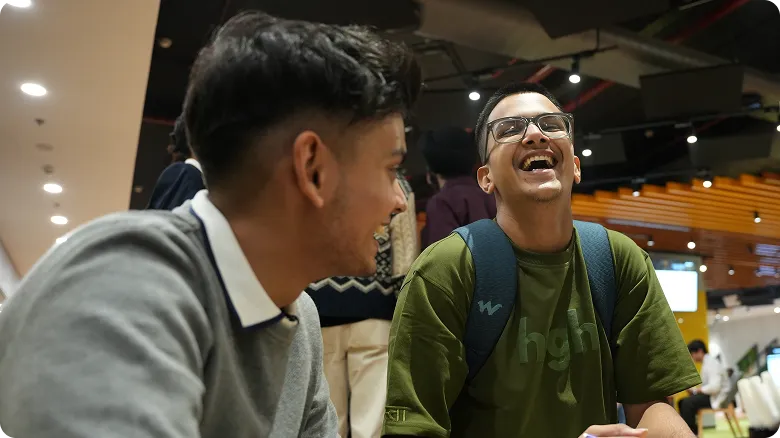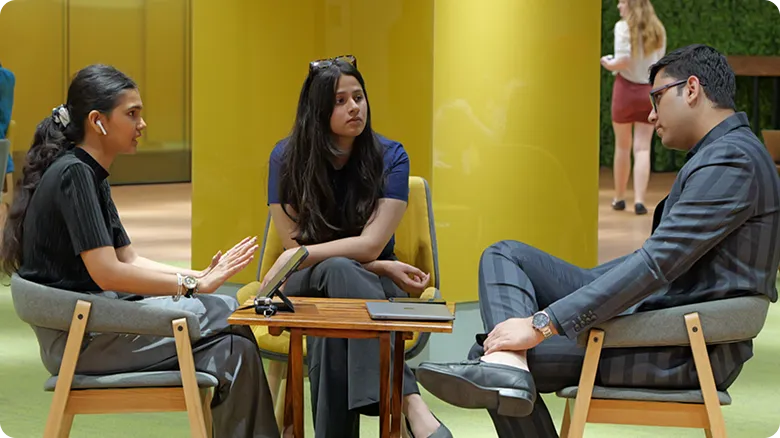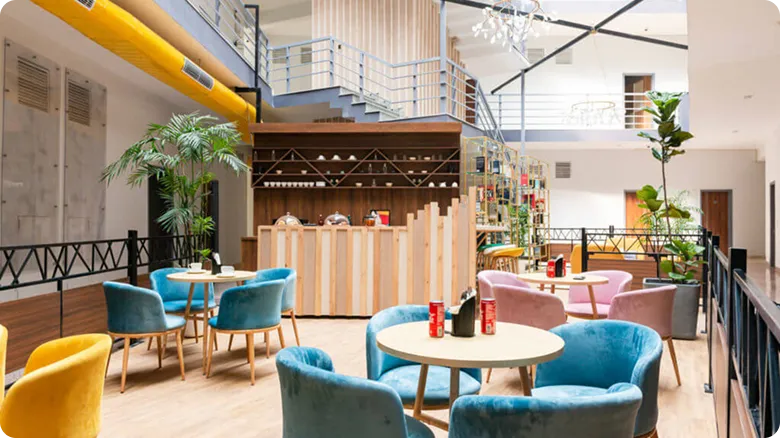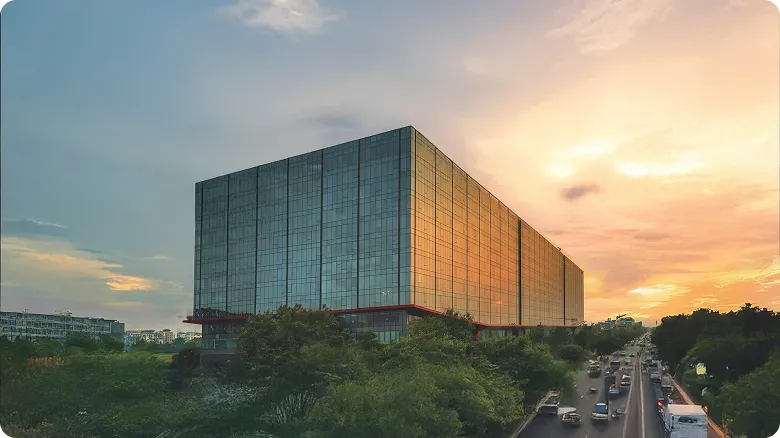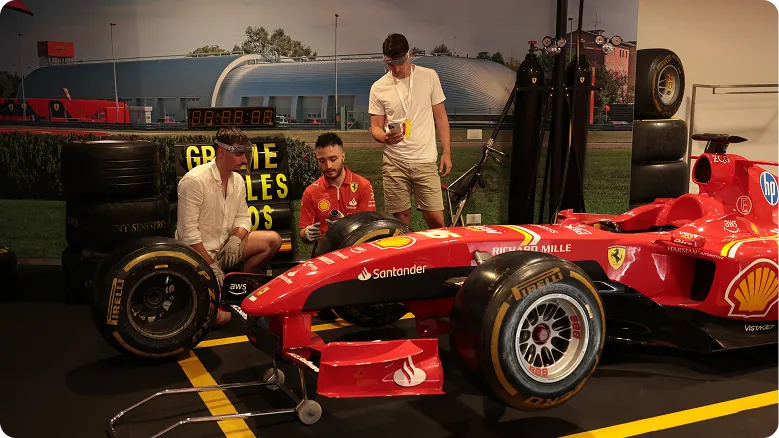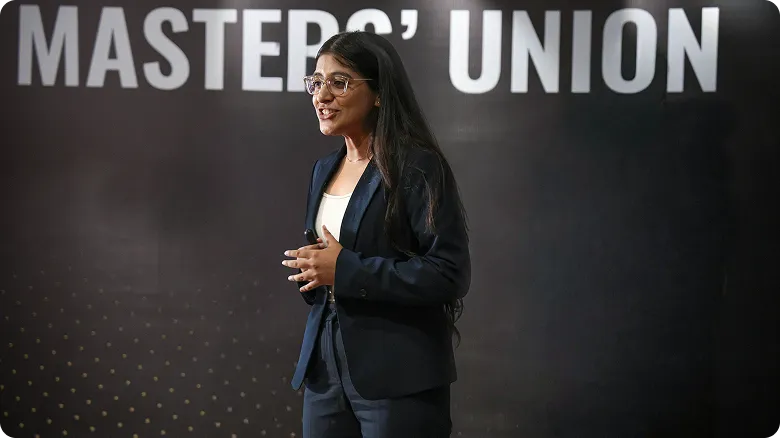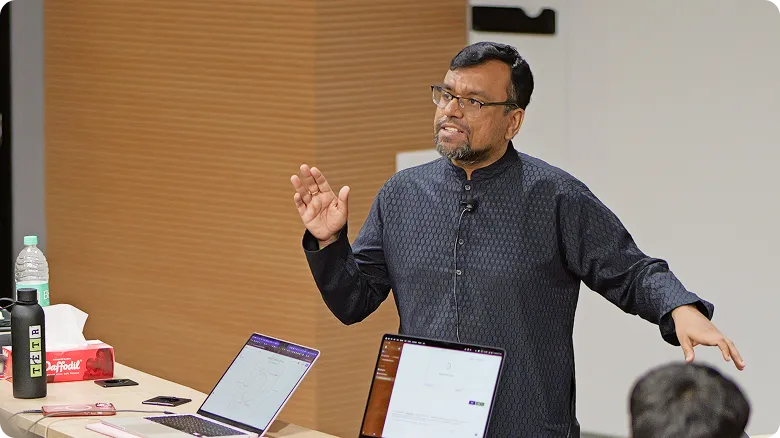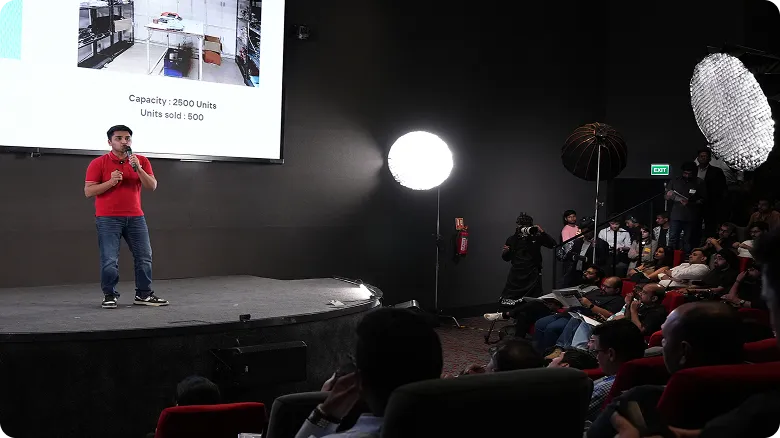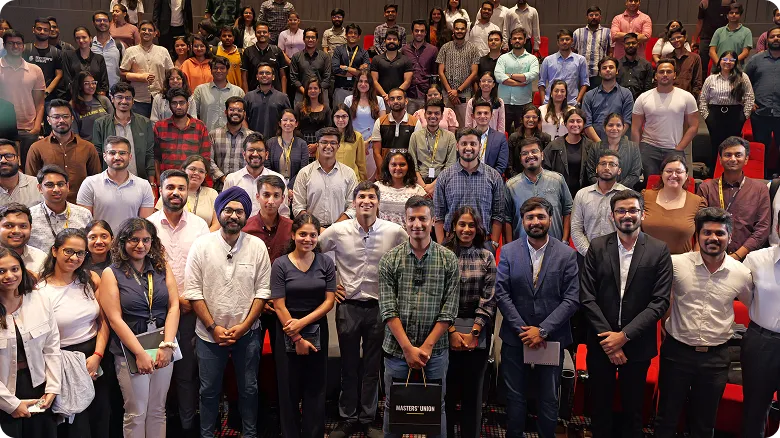Apply to the Shark Tank S5 Campus Special (Open to All Students)
Apply NowUndergraduate
Undergraduate (Global)
Postgraduate
Executive
Family Business
Careers
Innovations
Faculty
MU Ventures
Student Life
Jobs
Become a Master
events
For Companies
Blog
Business
How Community Building Has Evolved in the Digital Age: Insights from Alex, CEO of NAS Company
January 30, 2025
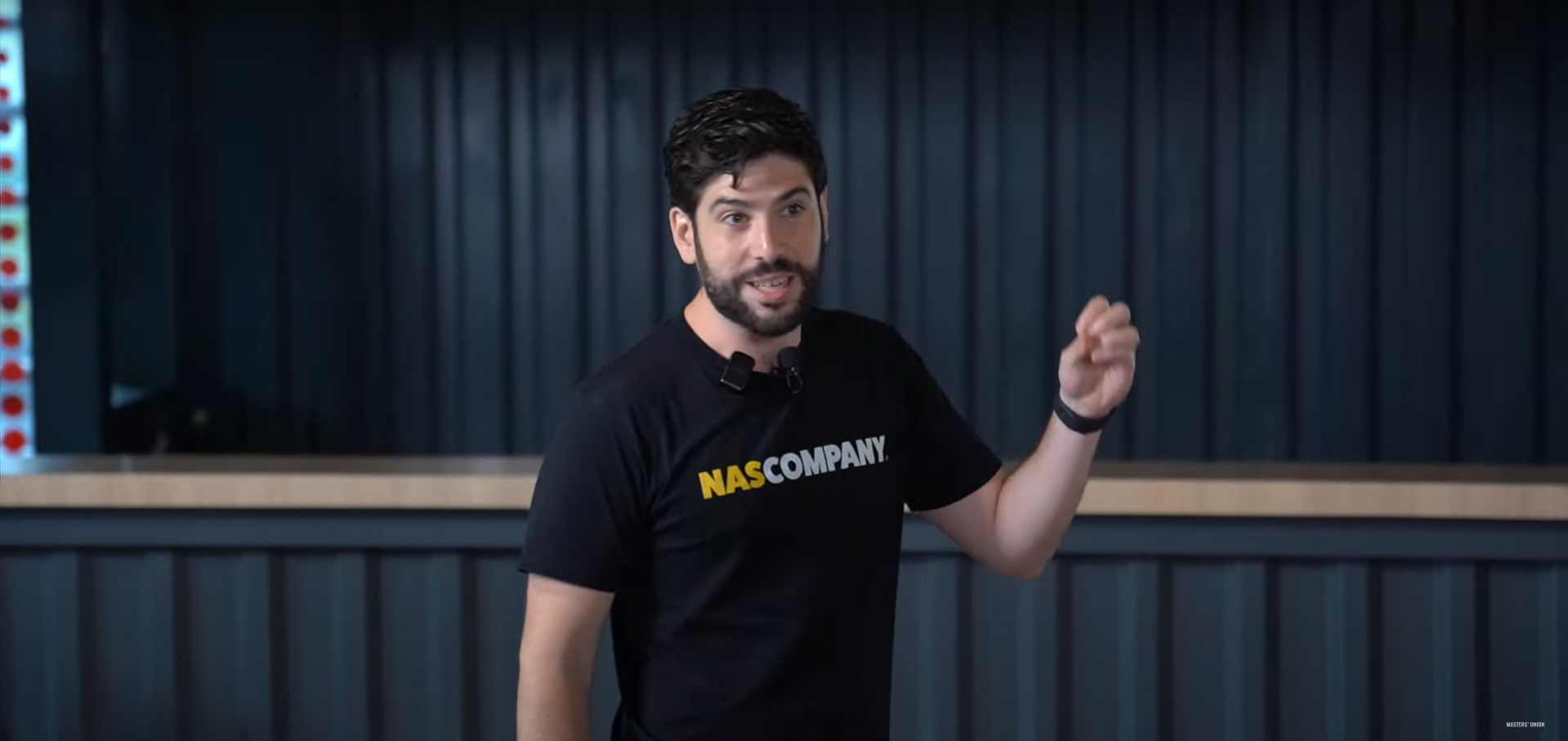
In this digital age, content creation and community building are no longer just buzzwords—they are the foundation of successful entrepreneurial ventures. Alex, CEO of NAS Company, recently visited Masters' Union for a Series C session, where he unpacked the transformation of these essential components. He shed light on the evolving dynamics of engagement and shared insights on how creators can stay ahead of the curve.
Want to watch the video instead?
Watch the podcast to hear as Alex advises businesses to use social media to “attract” their target audience and leverage text-based platforms like WhatsApp or Discord to engage and retain them.
The shift from long-form to short-form content
Let's face it: platforms like TikTok have flipped the script on content creation. Gone are the days when YouTube’s long-form content was the go-to for building an audience. Now, it’s all about those quick bursts of information, capturing attention in a matter of seconds. The audience wants instant gratification—bite-sized, engaging content that fits their fast-paced lives. But this shift isn’t just a trend; it’s a reflection of deeper changes in consumer behavior.
Where traditional methods like Facebook groups or YouTube videos once thrived, these methods are quickly becoming less effective in creating lasting community bonds. If you’re a content creator or an entrepreneur, you can no longer rely solely on platforms that thrive off algorithms. Instead, you need to rethink how you build and sustain your community.
Community building 1.0 vs. 2.0: The real difference
This brings us to Community Building 1.0 vs. 2.0. The former focused on creating content for public platforms, hoping to spark engagement from viewers. But in today’s world, where algorithms can make or break your reach, a deeper, more meaningful connection is non-negotiable.
Community Building 2.0 is about establishing trust and ownership. It's about creating an ecosystem where you don’t just speak at your audience—you engage with them, build relationships, and hold their trust. The days of simply amassing followers are over. Real community success lies in fostering personal connections, gathering user data responsibly, and ensuring that the conversations you start continue beyond a mere click or like.
The pitfalls of algorithm-driven discovery
Alex also addresses the elephant in the room: algorithms. Yes, they can make or break your reach. With social platforms like Instagram and Facebook limiting organic reach, creators and businesses are forced to play by rules set by algorithms. The problem? These rules are ever-changing, and your followers don’t always see your content.
This makes it critical to find ways to stay in direct communication with your audience. Moving beyond social media to private, controlled spaces like WhatsApp or Discord is where the magic happens. By doing so, you get access to deeper engagement and a more personalized connection with your community—something social media can’t guarantee anymore.
Owning your users: A must for success
Building your community means owning your user base. Think about it. If you depend entirely on social media to foster connections, you're at the mercy of algorithm changes. By taking your community to spaces like WhatsApp or Discord, you take back control. This ensures that your audience receives your content directly, allowing you to nurture these relationships without interference.
But remember: just having the space isn’t enough. You need to deliver value first, engage deeply, and foster relationships before you even think about monetizing.
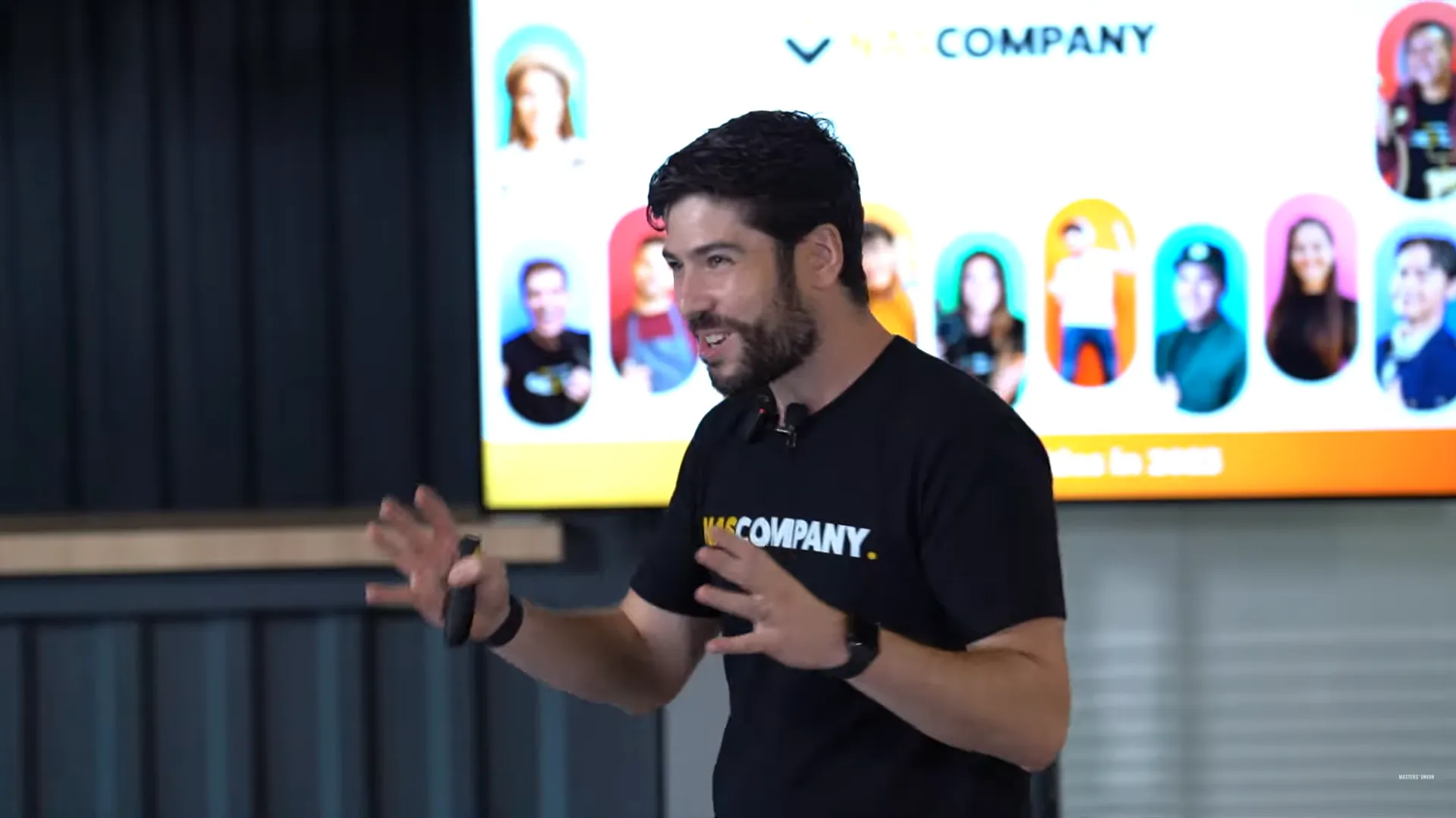
The power of providing value before selling
Successful entrepreneurs understand that value comes first—selling comes later. You build credibility and trust by delivering value consistently. When your community believes in you, they’ll be far more willing to engage in future transactions. This concept is paramount, and it’s something Alex emphasizes throughout his workshop.
The role of community managers: Not just moderators
Another key takeaway is the importance of community managers. Their role goes beyond moderation—they are the connectors, the orchestrators, the ones ensuring that your community functions like a well-rehearsed orchestra. With the right community manager, engagement thrives. Their ability to facilitate discussion, encourage interaction, and keep the community vibe alive can make all the difference.
Innovative engagement strategies: The future of community building
So, how can you keep your community engaged and invested? Alex shares several innovative strategies, from interactive workshops to using AI tools that summarize group discussions. These methods keep members active and involved, ensuring the community stays dynamic and relevant. After all, static communities are a thing of the past.
Alex’s insights offer a forward-thinking approach to community building and content creation. In a world where the digital landscape is constantly evolving, adapting to these changes will set creators, entrepreneurs, and businesses apart. The future of community building lies in ownership, value creation, and meaningful connections. Stay ahead of the curve, and your community will follow.

